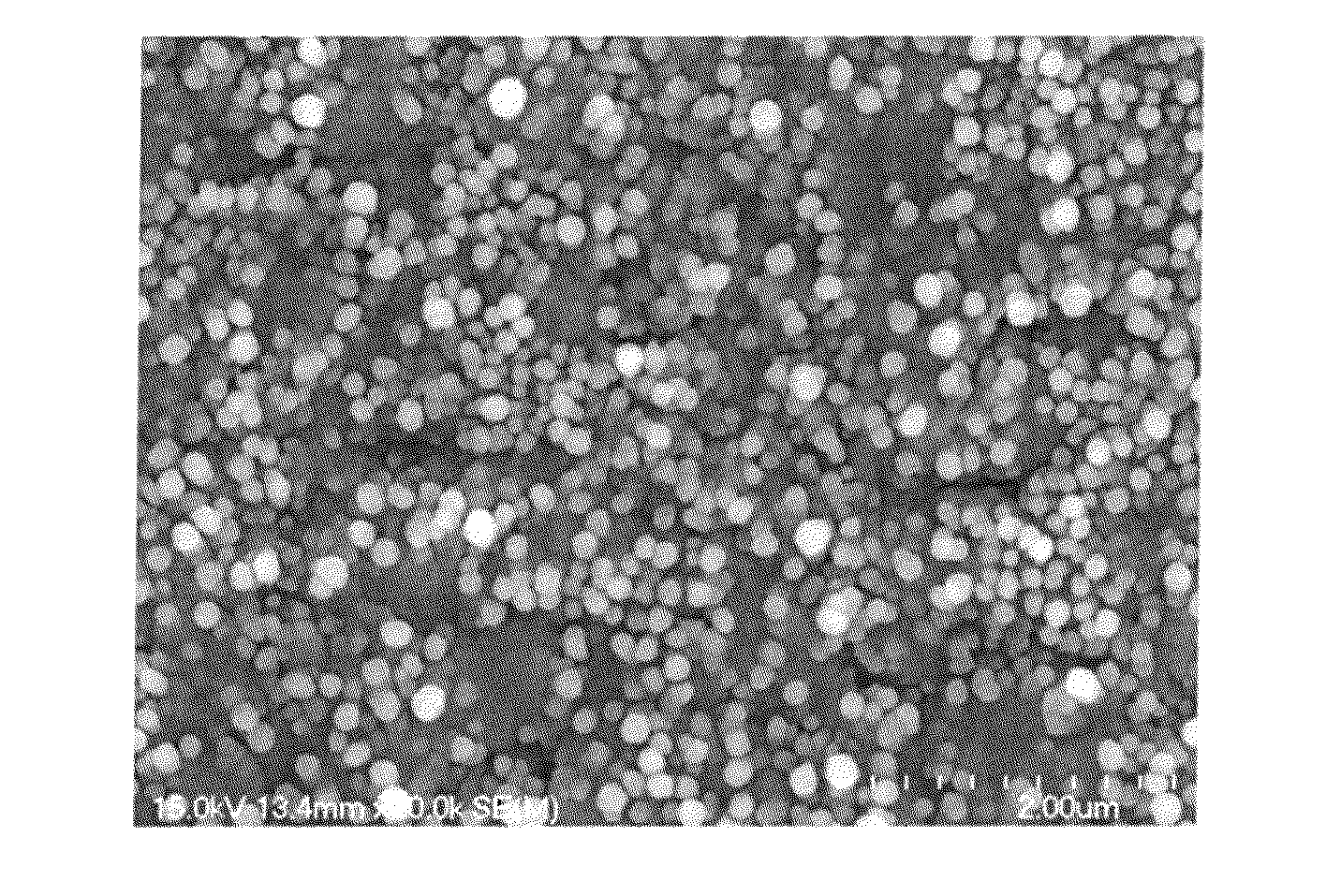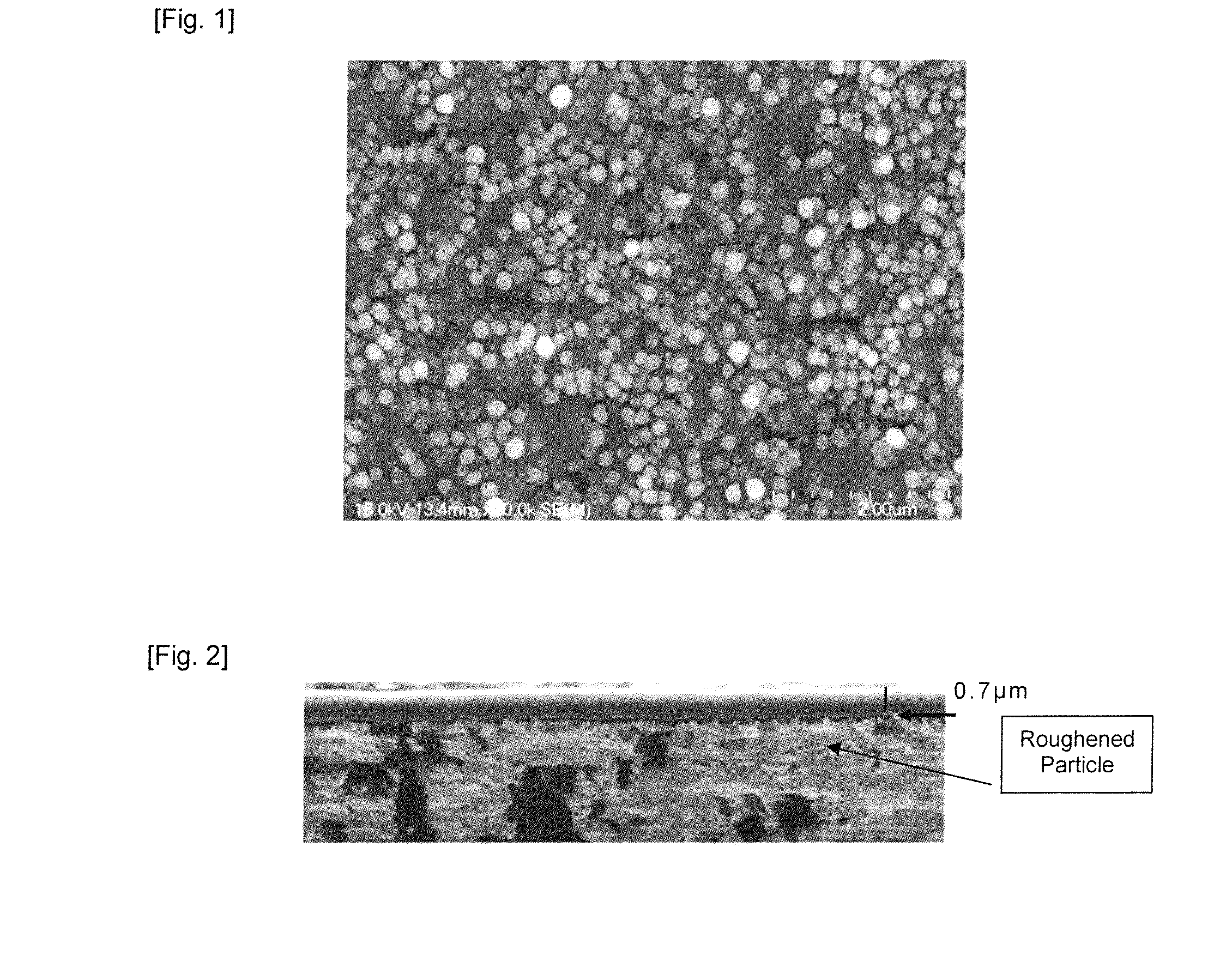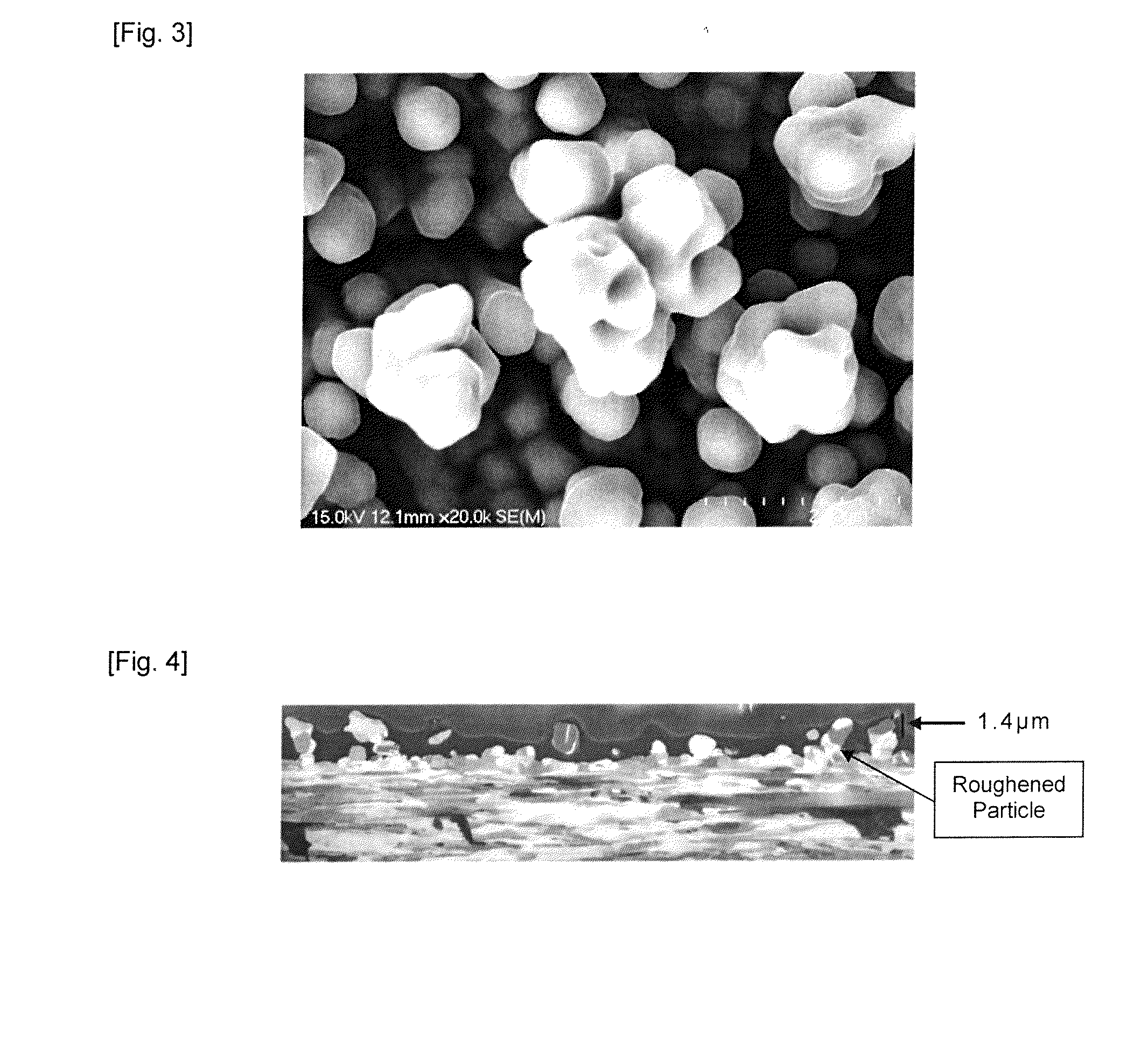Copper foil for negative electrode current collector of secondary battery
a copper foil and collector technology, applied in the field of copper foil for a secondary battery negative electrode current collector, can solve the problems of inability to obtain the adhesiveness between the copper foil for the negative electrode current collector and the active material, the roughness degree is high, and the contrarily weak anchoring effect, etc., to achieve superior adhesiveness of the secondary battery active material, and reduce the variation in the area weight of the active material of the secondary battery
- Summary
- Abstract
- Description
- Claims
- Application Information
AI Technical Summary
Benefits of technology
Problems solved by technology
Method used
Image
Examples
example 1
[0086]In Example 1, the average surface roughness Ra of both the front and rear surfaces based on laser microscope measurement was 0.07 μm. When a three-dimensional surface area upon measuring the roughened surfaces with a laser microscope is (A), a two-dimensional area as a projected area upon measuring the three-dimensional surface area is (B), and a calculated value of (A) / (B) is expressed in (C), and when a three-dimensional surface area upon measuring the surfaces of a non-roughened rolled copper or copper alloy foil with a laser microscope is (A′), a two-dimensional area as a projected area upon measuring the three-dimensional surface area is (B′), and a calculated value of (A′) / (B′) is expressed in (C′); (C) / (C′) was 1.004.
[0087]The SEM photograph (×20000) of the roughening particles in the foregoing case is shown in FIG. 1. As shown in FIG. 1, fine and uniform particles were formed. Moreover, the average diameter of the roughening particles of the roughened surfaces was 0.1 ...
example 2
[0091]In Example 2, the average surface roughness Ra of both the front and rear surfaces based on laser microscope measurement was 0.07 μm. When a three-dimensional surface area upon measuring the roughened surfaces with a laser microscope is (A), a two-dimensional area as a projected area upon measuring the three-dimensional surface area is (B), and a calculated value of (A) / (B) is expressed in (C), and when a three-dimensional surface area upon measuring the surfaces of a non-roughened rolled copper or copper alloy foil with a laser microscope is (A′), a two-dimensional area as a projected area upon measuring the three-dimensional surface area is (B′), and a calculated value of (A′) / (B′) is expressed in (C′); (C) / (C′) was 1.05.
[0092]Moreover, the average diameter of the roughening particles of the roughened surfaces was 0.1 to 0.4 μm, and the variation in area weight was <0.5 (σ). Furthermore, the maximum height of the roughened layer was 0.2 μm, and was within the preferred range...
example 3
[0093]In Example 3, the average surface roughness Ra of both the front and rear surfaces based on laser microscope measurement was 0.15 μm. When a three-dimensional surface area upon measuring the roughened surfaces with a laser microscope is (A), a two-dimensional area as a projected area upon measuring the three-dimensional surface area is (B), and a calculated value of (A) / (B) is expressed in (C), and when a three-dimensional surface area upon measuring the surfaces of a non-roughened rolled copper or copper alloy foil with a laser microscope is (A′), a two-dimensional area as a projected area upon measuring the three-dimensional surface area is (B′), and a calculated value of (A′) / (B′) is expressed in (C′); (C) / (C′) was 1.03.
[0094]Moreover, the average diameter of the roughening particles of the roughened surfaces was 0.1 to 0.4 μm, and the variation in area weight was <0.5 (σ). Furthermore, the maximum height of the roughened layer was 0.2 μm, and was within the preferred range...
PUM
| Property | Measurement | Unit |
|---|---|---|
| Length | aaaaa | aaaaa |
| Diameter | aaaaa | aaaaa |
| Electric charge | aaaaa | aaaaa |
Abstract
Description
Claims
Application Information
 Login to View More
Login to View More - R&D
- Intellectual Property
- Life Sciences
- Materials
- Tech Scout
- Unparalleled Data Quality
- Higher Quality Content
- 60% Fewer Hallucinations
Browse by: Latest US Patents, China's latest patents, Technical Efficacy Thesaurus, Application Domain, Technology Topic, Popular Technical Reports.
© 2025 PatSnap. All rights reserved.Legal|Privacy policy|Modern Slavery Act Transparency Statement|Sitemap|About US| Contact US: help@patsnap.com



